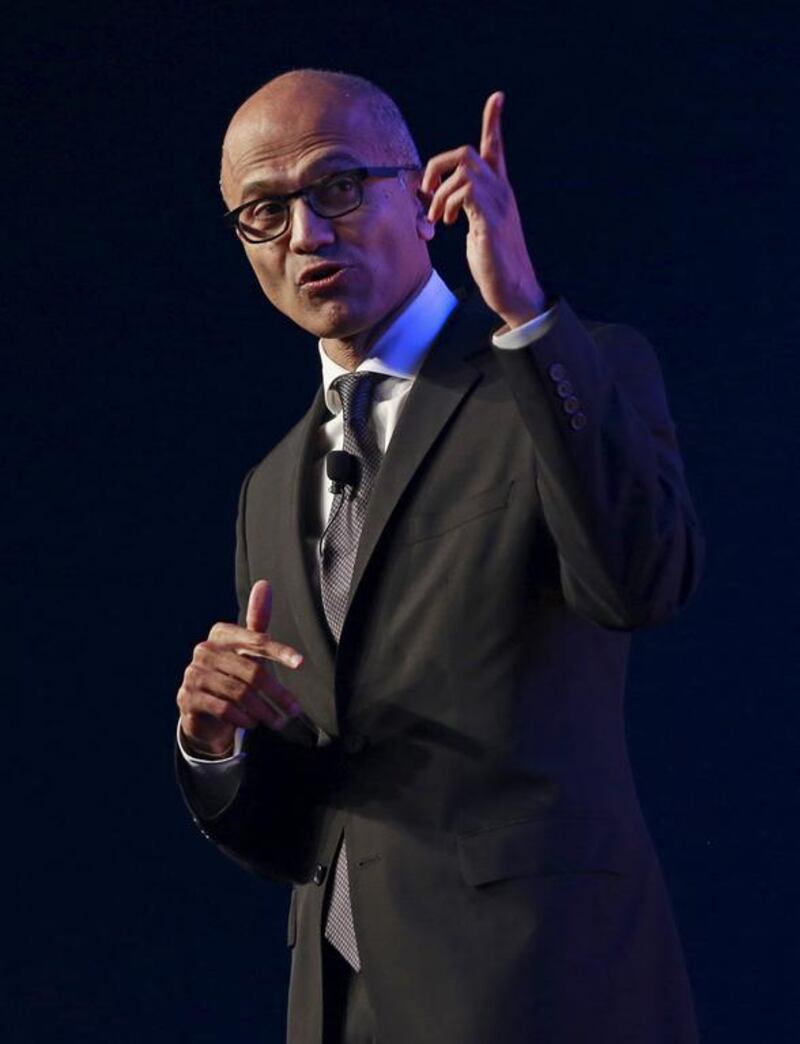The world is upside-down – not only is Apple being panned for its new laptops, Microsoft is getting praise for its latest PC. The Windows maker is actually getting the most bizarre and unexpected compliment of all, that it’s the new Apple.
The role reversal comes with the companies’ latest product announcements. Spaced just a day apart, Microsoft and Apple launched new computers last week in an effort to win over consumers ahead of the busy holiday shopping period.
Microsoft’s entry, introduced by chief executive Satya Nadella last Wednesday, wowed the tech press and social media onlookers. The Surface Studio is pricey at US$2,999, but it does a bunch of neat things. It has powerful guts, a beautiful 28-inch screen and a swivelling base that lets it lie nearly flat, like an artist’s drafting board.
The screen is touch-enabled and works with a stylus. Microsoft has also added the Surface Dial, a knob that lets users rotate images and pick colours from a wheel, among other applications.
The high-end PC is clearly aimed at creative types who want a machine with horsepower, a host of interface tools and adaptability. Not surprisingly, said creative types were all “oohs” and “ahhs” after the unveiling.
Apple, for its part, last Thursday launched a new Macbook Pro line-up, ranging in price from $1,549 to $3,499. The reaction to the long-awaited refreshening was noticeably different.
The Macbook’s new headline feature, available in higher-end models, is a touch bar that runs along the top of the keyboard. Replacing the function and escape keys, the pad’s controls change depending on which app is running on screen.
It’s a nice addition, but onlookers were more concerned about what Apple is taking away.
The new Macbooks do away with SD card slots, useful for loading photos and other media, and the HDMI port that connects to TVs, monitors and projectors. Both were popular features on previous models.
The deal breaker for creative types, however, is the Macbook Pro’s new 16 gigabyte limit on random access memory (RAM), which Apple says is necessary to preserve battery life. Previously it was upgradeable beyond that. Professionals often need more RAM for heavy-duty photo and video production.
Photographers, coders and video engineers were quick to point out there is nothing “pro” about this development because it significantly limits the laptops’ power. Many resorted to colourful language on Twitter.
To make matters worse, Apple also failed to unveil new desktop computers, meaning its iMac line-up is becoming more underpowered by the day compared with competitors.
To many, it looks like Apple is neglecting its roots and shunning the creative professionals who have long used its products exclusively.
From a business standpoint, it could be an understandable position given that Macs account for only about 10 per cent of Apple’s revenue. The company may be better off deploying engineering resources to more lucrative product lines.
But as Facebook software engineer Milen Dzhumerov argued on his blog, abandoning creative professionals is a long-term mistake because they fuel the rest of Apple’s business.
“All the iOS, watchOS and tvOS software gets created on the Mac,” he wrote. “Neglecting the Mac platform will have a knock-on effect on the wider Apple ecosystem.” In other words, people abandoning Macs could spell trouble for iPhones, iPads and everything else Apple sells.
Apple isn’t winning any love on the mobile side either. The iPhone 7, launched in September, likewise captured more headlines for what it took away – the headphone jack – than what it added.
Google, meanwhile, is getting rave reviews for its new Pixel smartphone. Many reviewers, myself included, consider it the best smartphone on the market thanks to an amazing camera, excellent battery life and an intelligent personal assistant.
The iPhone, which delivers more than half of Apple’s revenue and profit, is no longer the king of the mountain.
These shifts in sentiment aren’t just perception, they’re increasingly showing up in the bottom line as well. In its recent fourth-quarter results, Apple reported a profit of $9 billion on $46bn in revenue, down 19 per cent and 9 per cent, respectively, from a year ago.
While many companies would kill to post such lofty numbers, the declines are more notable because Apple’s downward momentum is accelerating.
It’s hard to look at the increasingly negative sentiment and souring numbers and not be reminded of BlackBerry. The end started slowly there too, then sped up dramatically.
Never mind Microsoft looking like the new Apple – Apple is starting to look like the new BlackBerry.
Winner of the Week: Giphy. The New York-based animated image platform has announced $72 million in new funding, which values the company at $600m. It is good timing, given that the company is offering to host Vine videos now that Twitter is shutting down the short-form video service.
Loser of the Week: Gig economy companies. A new report finds that Uber drivers discriminate against potential passengers with black-sounding names. With Airbnb hosts recently found guilty of similar biases, the so called gig economy companies are now under pressure to come up with more equitable booking systems.
Peter Nowak is a veteran technology writer and the author of Humans 3.0: The Upgrading of the Species.
business@thenational.ae
Follow The National's Business section on Twitter





